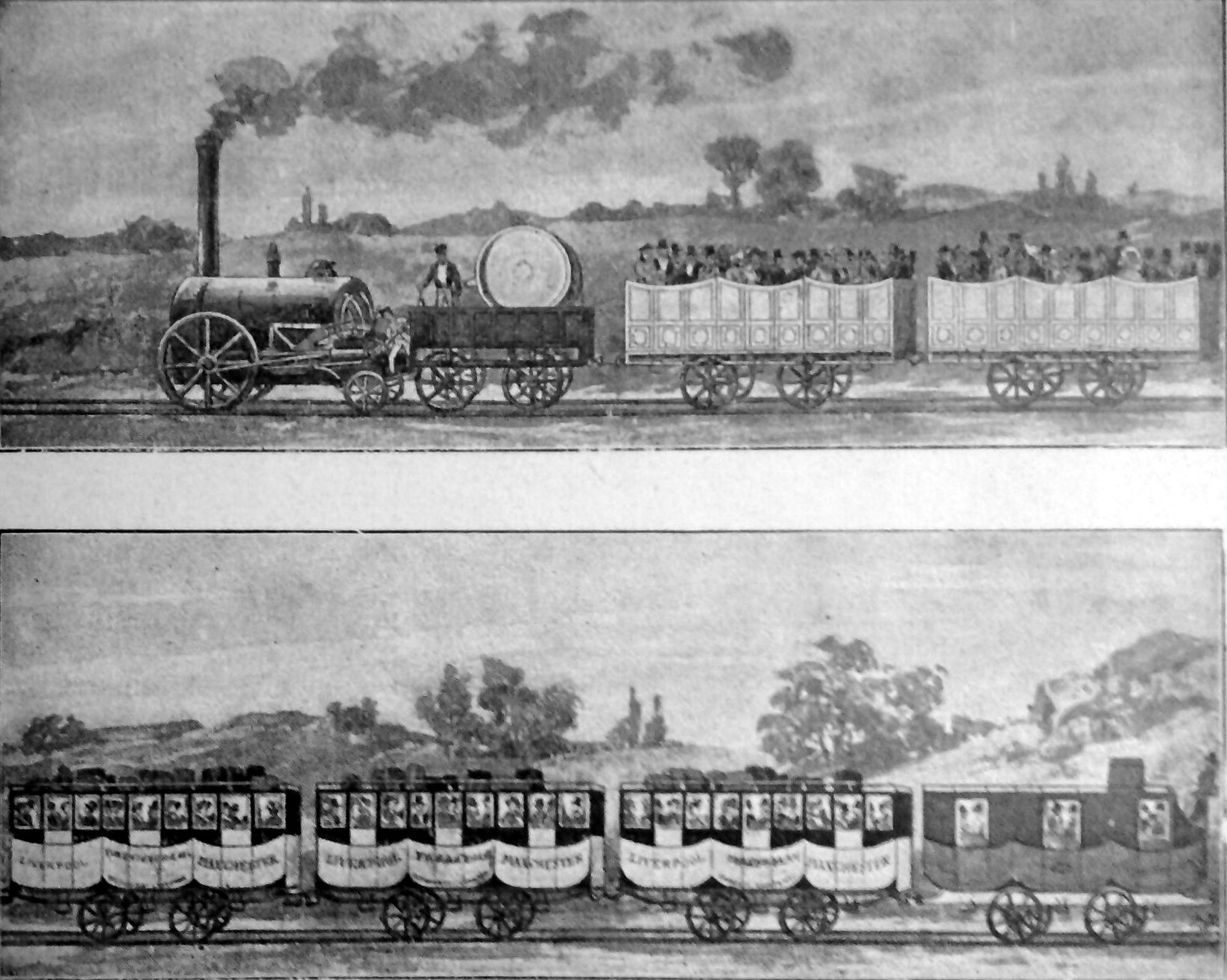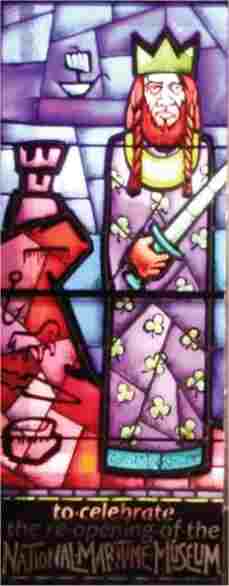|
Thomas Fleming Bergin
Thomas Fleming Bergin was an early Irish railway official. He was the Company Clerk of the Dublin and Kingstown Railway (D&KR), the first public railway in Ireland. He was also responsible for the design of the ''Bergin Patent Spring Buffer'', the buffering system that it used. Life Bergin, who was by profession an engineer, was to join the D&KR in 1932, replacing James Pim as company secretary. Lyons notes Pim and Bergin as "two of the most valuable engines the D&KR possessed, although other individuals also played an important part." Murray notes Bergin was to have a "large part of the daily management of the railway", and also notes the Bergin and Pim made an excellent team. Bergin was to remain loyal to the D&KR despite offers from other railways. Thomas notes the D&KR ''Chief Clerk'' (aka Bergin) was sent to the Liverpool and Manchester Railway (L&MR) in June 1833. Dawson notes Bergin observed the sprung buffer / connection system used on the L&MR and determined to develo ... [...More Info...] [...Related Items...] OR: [Wikipedia] [Google] [Baidu] |
Dublin And Kingstown Railway
The Dublin and Kingstown Railway (D&KR), which opened in 1834, was Ireland’s first passenger railway. It linked Westland Row in Dublin with Kingstown Harbour (Dún Laoghaire) in County Dublin. The D&KR was also notable for a number of other achievements besides being Ireland's first passenger railway: it operated an atmospheric railway for ten years; claimed the first use of a passenger tank engine; was the world's first commuter railway and was the first railway company to build its own locomotives. On 30 June 1856 the Dublin and Wicklow Railway (D&WR) took over operation of the line from the D&KR with the D&KR continuing to lease out the line. The D&WR had formerly been known as the Waterford, Wicklow, Wexford and Dublin Railway (WWW&DR or 3WS). It changed its name to the Dublin Wicklow and Wexford Railway (DW&WR) in May 1860 and was ultimately renamed the Dublin and South Eastern Railway (D&SER) in 1907, a name which was retained until the amalgamation of the D&KR and D ... [...More Info...] [...Related Items...] OR: [Wikipedia] [Google] [Baidu] |
James Pim
James Pim was the key person to the establishment and operation of the first passenger railway in Ireland, the Dublin and Kingstown Railway (D&KR), and the first commercial atmospheric railway in the world, the Dalkey Atmospheric Railway. Biography James Pim (1796–1856), often distinguished from his father as ''junior'', originated from a branch of the Pim Quaker family of Mountmellick that moved to Dublin in 1795. His father was James Pim Senior, who had corn merchant interests, and was a cousin of Thomas, Jonathan and Joseph Pim. The appears to be a record to a marriage on 11 November 1823 to Eliza Hogg of Redford, County Tyrone, daughter of Johnathan Hogg, at the Friend's Meeting-house Dungannon. Pim set up a stockbroking business in 1824, this requiring relatively little capital but would have required personal securities which could have been backed by members of his kin. He acquired the Dublin agency for the Imperial Fire Assurance Company from his father. He b ... [...More Info...] [...Related Items...] OR: [Wikipedia] [Google] [Baidu] |
Liverpool And Manchester Railway
The Liverpool and Manchester Railway (L&MR) was the first inter-city railway in the world. It opened on 15 September 1830 between the Lancashire towns of Liverpool and Manchester in England. It was also the first railway to rely exclusively on locomotives driven by steam power, with no horse-drawn traffic permitted at any time; the first to be entirely double track throughout its length; the first to have a true signalling system; the first to be fully timetabled; and the first to carry mail. Trains were hauled by company steam locomotives between the two towns, though private wagons and carriages were allowed. Cable haulage of freight trains was down the steeply-graded Wapping Tunnel to Liverpool Docks from Edge Hill junction. The railway was primarily built to provide faster transport of raw materials, finished goods and passengers between the Port of Liverpool and the cotton mills and factories of Manchester and surrounding towns. Designed and built by George Step ... [...More Info...] [...Related Items...] OR: [Wikipedia] [Google] [Baidu] |
Dublin Pearse Railway Station
Pearse railway station ( ga, Stáisiún na bPiarsach) or Dublin Pearse is a railway station on Westland Row on the Southside of Dublin, Ireland. It is Ireland's busiest commuter station and second busiest station overall (behind Dublin Connolly railway station) with 9 million passenger journeys through the station in 2016. Services All DART services stop at the station. Additionally Pearse is on the South Eastern Commuter (Dublin Connolly to Gorey) and South Western Commuter (Grand Canal Dock to Newbridge) routes, and is a terminus for the Northern Commuter (to Balbriggan / Dundalk) and Western Commuter (to Maynooth / Longford) services. It also services the InterCity (from Dublin Connolly to Rosslare Europort) route. Facilities The station has two through platforms, 1 and 2, the former on the Boyne Street side for northbound "up" services towards Connolly station, the other on the Pearse Street side for southbound "down" services towards Bray. It also has a café and ... [...More Info...] [...Related Items...] OR: [Wikipedia] [Google] [Baidu] |
Dún Laoghaire
Dún Laoghaire ( , ) is a suburban coastal town in Dublin in Ireland. It is the administrative centre of Dún Laoghaire–Rathdown. The town was built following the 1816 legislation that allowed the building of a major port to serve Dublin. It was known as Dunleary until it was renamed Kingstown in honour of King George IV's 1821 visit, and in 1920 was given its present name, the original Irish form of Dunleary. Over time, the town became a residential location, a seaside resort and the terminus of Ireland's first railway. Toponymy The town's name means "fort of Laoghaire". This refers to Lóegaire mac Néill (modern spelling: Laoghaire Mac Néill), a 5th century High King of Ireland, who chose the site as a sea base from which to carry out raids on Britain and Gaul. Traces of fortifications from that time have been found on the coast, and some of the stone is kept in the Maritime Museum. The name is officially spelt Dún Laoghaire in modern Irish orthography; somet ... [...More Info...] [...Related Items...] OR: [Wikipedia] [Google] [Baidu] |
Dublin And Wicklow Railway
The Dublin and South Eastern Railway (DSER), often referred to as the Slow and Easy, was an Irish gauge () railway in Ireland from 1846 to 1925. It carried 4,626,226 passengers in 1911. It was the fourth largest railway operation in Ireland operating a main line from Dublin to , with branch lines to Shillelagh and . The company previously traded under the names Waterford, Wexford, Wicklow & Dublin Railway (WWW&DR or 3WS) to 1848, Dublin and Wicklow Raillway (D&WR) to 1860 and Dublin, Wicklow and Wexford Railway (DW&WR) until 1906. The DSER joined with the Great Southern Railway on 1 January 1925, the resultant company being known as Great Southern Railways. History It was incorporated by Act of Parliament in 1846 as the "Waterford, Wexford, Wicklow and Dublin Railway Company". In 1860 it was renamed the "Dublin, Wicklow and Wexford Railway Company" and on 31 December 1906 it was renamed again as the DSER. Amongst the lines forming the DSER was the Dublin and Kingstown Railwa ... [...More Info...] [...Related Items...] OR: [Wikipedia] [Google] [Baidu] |
19th-century Irish People
The 19th (nineteenth) century began on 1 January 1801 ( MDCCCI), and ended on 31 December 1900 ( MCM). The 19th century was the ninth century of the 2nd millennium. The 19th century was characterized by vast social upheaval. Slavery was abolished in much of Europe and the Americas. The First Industrial Revolution, though it began in the late 18th century, expanding beyond its British homeland for the first time during this century, particularly remaking the economies and societies of the Low Countries, the Rhineland, Northern Italy, and the Northeastern United States. A few decades later, the Second Industrial Revolution led to ever more massive urbanization and much higher levels of productivity, profit, and prosperity, a pattern that continued into the 20th century. The Islamic gunpowder empires fell into decline and European imperialism brought much of South Asia, Southeast Asia, and almost all of Africa under colonial rule. It was also marked by the collapse of the large ... [...More Info...] [...Related Items...] OR: [Wikipedia] [Google] [Baidu] |



